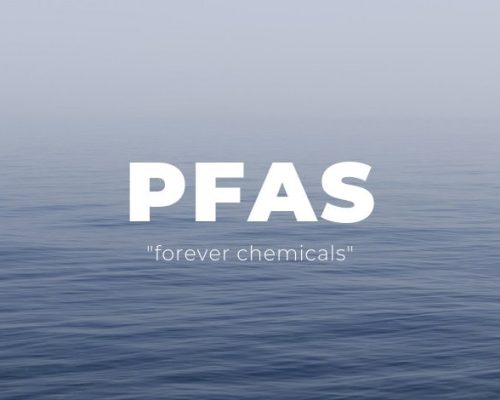In recent years, growing concerns have emerged about a group of toxic substances known as per- and polyfluoroalkyl substances (PFAS), commonly referred to as “forever chemicals.” These synthetic compounds are widely used in industrial and consumer products for their water-resistant, nonstick, and heat-resistant properties. However, despite their convenience, PFAS pose serious health risks and persist in the environment for decades, leading to widespread contamination of water, soil, and even the human body.
What Are PFAS and Where Are They Found?
PFAS are a family of over 12,000 man-made chemicals that have been used since the 1940s. They are commonly found in:
- Nonstick cookware (Teflon and other coatings)
- Waterproof and stain-resistant fabrics (clothing, upholstery, carpets)
- Food packaging (fast-food wrappers, microwave popcorn bags, pizza boxes)
- Firefighting foam (used in airports, military bases, and industrial sites)
- Personal care products (waterproof mascara, lotions, dental floss)
- Household cleaning products
- Pesticides and industrial lubricants
Due to their strong chemical bonds, PFAS do not break down easily, which is why they are called “forever chemicals.” Over time, they accumulate in the environment, drinking water, and living organisms, posing long-term health risks.
The Shocking Health Risks of PFAS Exposure
Extensive research has linked PFAS exposure to serious health issues, even at low levels. Some of the most alarming health effects include:
1. Increased Cancer Risk
Studies have found that long-term exposure to PFAS is associated with kidney and liver cancer. These chemicals disrupt cell function and promote tumor growth, making them a major carcinogenic threat.
2. Hormonal and Endocrine Disruption
PFAS interfere with the body’s hormone regulation system, affecting thyroid function, reproductive health, and metabolism. This can lead to infertility, developmental delays in children, and disrupted puberty.
3. Immune System Suppression
Exposure to PFAS can weaken the immune system, reducing the body’s ability to fight infections.
4. Developmental and Birth Defects
Pregnant women exposed to PFAS have a higher risk of low birth weight, premature birth, and birth defects in their babies. The chemicals pass through the placenta and even into breast milk, affecting infants at their most vulnerable stage.
5. Liver and Kidney Damage
PFAS accumulate in the liver and kidneys, causing liver damage, kidney disease, and high cholesterol levels. Over time, these organs struggle to filter toxins properly, leading to chronic health problems.
6. Metabolic Disorders and Obesity
Some PFAS act as endocrine disruptors, interfering with metabolism and contributing to weight gain, insulin resistance, and an increased risk of diabetes.
PFAS in Our Water Supply: A Silent Crisis
One of the biggest concerns about PFAS is their contamination of drinking water. Since these chemicals do not degrade, they seep into groundwater, rivers, and lakes, affecting millions of people worldwide.
How Do PFAS Get Into Water?
- Industrial waste from factories and chemical plants
- Firefighting foam runoff
- Landfill leakage and wastewater treatment plants
- Agricultural runoff from contaminated soil
How to Protect Yourself from PFAS Exposure
While completely avoiding PFAS is challenging due to their widespread presence, you can take steps to reduce your exposure:
1. Filter Your Drinking Water
- Use activated carbon filters or reverse osmosis systems, which are effective at removing PFAS from tap water.
- Avoid bottled water unless verified as PFAS-free.
2. Choose Safer Cookware
- Avoid Teflon and nonstick cookware. Opt for stainless steel, cast iron, or ceramic alternatives.
3. Be Mindful of Food Packaging
- Avoid fast food wrappers, microwave popcorn, and takeout containers lined with PFAS.
- Choose glass or stainless steel storage containers over plastic ones.
4. Read Labels on Personal Care Products
- Avoid products containing PTFE, “fluoro” compounds, or perfluorinated ingredients.
- Opt for clean beauty brands that prioritize non-toxic ingredients.
5. Avoid Stain-Resistant and Water-Repellent Products
- Skip furniture, carpets, and clothing labeled “stain-resistant” or “waterproof” unless they are PFAS-free.
Final Thoughts: Time to Take Action
The truth about forever chemicals is alarming, but the good news is that awareness is growing. By educating ourselves and making informed choices, we can minimize our exposure, protect our health, and push for stronger regulations to ban these harmful substances.
At Savvy Wellness, we prioritize detoxification, holistic healing, and clean living to help counteract the toxic burden of environmental pollutants, including PFAS. Through lymphatic drainage, ionic detox footbath, infrared sauna therapy and nutritional support, we offer natural solutions to help your body eliminate toxins and restore balance.
It’s time to take control of our health, demand action, and push for a toxin-free future.

